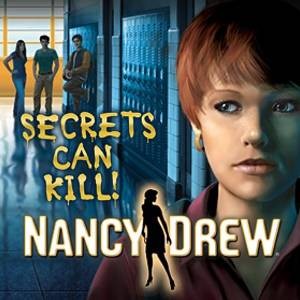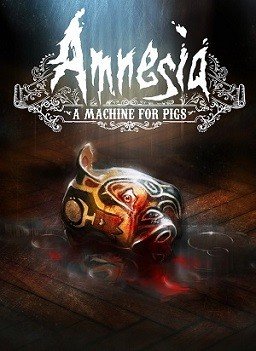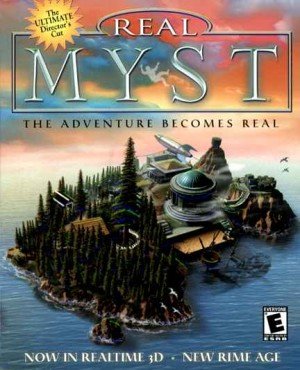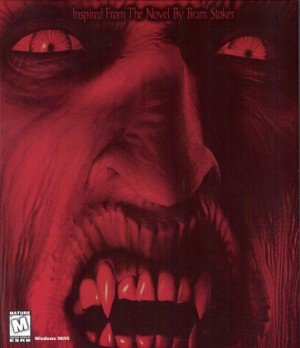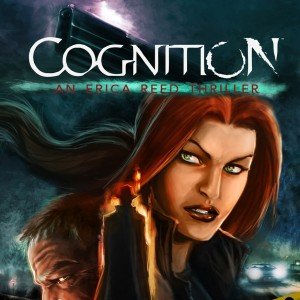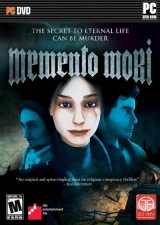Nancy Drew: Secrets Can Kill – Remastered flashback review

For the 80th anniversary of the Nancy Drew book series in 2010, Her Interactive decided to release a remastered edition of the 12-year-old first game in their own long-running series, Secrets Can Kill. With a facelift and various updates bringing the game more into the 21st century, the new version is definitely an improvement over its predecessor, though some aspects still fall short of other, better entries in the franchise.
The basic plot remains unchanged: Nancy Drew, famed amateur sleuth, is called in from out of town to assist the police in their criminal investigation of a student’s murder at the local high school. Of course, along the way she uncovers plenty of dirty secrets about four other students, who are seemingly the only ones attending this strangely empty school. Changes to the story improve on the previous version in creating more believability, but there are still some definite holes. The excuse for having Nancy come in as an outsider to investigate a murder case is still pretty weak, though replacing her unlikely student police contact with Detective Beech – who’s undercover at the local diner as her “Uncle Steve” – is a positive change. The very thin romance plot between two of the students has been edited out almost completely, a wise move considering it added nothing to the overall story. One of the best changes is the removal of the deus ex machina ending that came out of nowhere in the original, even though the new sequence isn’t quite as exciting.
The characters for the most part are the same as well, with tweaks being made to Daryl’s character and the addition of Detective Beech. Connie, Hal and Hulk continue to be high school students that are somewhat stereotypical but with enough dark secrets to keep them from being total bores. Unfortunately, even changing Daryl’s backstory so he’s not quite the goody-goody that he was the first time around and inserting the quirky Detective don’t do much to liven up the cast here. Particularly compared to some of the entertaining screwballs found elsewhere in the series, these characters fall flat. Part of this is due to poor writing, which has barely changed from the original game, if at all. Dialogue is so intent on shoehorning in backstories to reveal each individual as a flawed character that there’s little room for nuance and no one’s personality really has a chance to shine.
The graphical enhancements are one of the best things about this edition, particularly in light of the cheesy cartoon characters and cutscenes in the 1998 version. The characters are now animated in full 3D, and the backgrounds have also received a facelift. The three main settings are Nancy’s Aunt Eloise’s house, the local high school where the murder occurred, and the ‘50s-style diner that serves as the local hangout for students. You’d think at least two of these would be teeming with activity, but one of the biggest problems in both versions is that there are no background characters whatsoever. While this is usually explained away in other games, it comes across as really unnatural that there are only five people visible in a fairly large high school. Even at home, you don’t get to meet or see Nancy’s aunt in the entire game. Each location benefits from the cosmetic makeover, however, looking much more modern and generally prettier and better designed, right down to small details like the jukebox in Maxine’s diner and the trunk in Aunt Eloise’s living room. Admittedly, the graphics are already showing their age now as the game was released in 2010, but it still looks good and has aged far better than the original.
Gameplay also received an upgrade in the newer version, though the basic mechanics remain the same as always. It’s viewed in first-person perspective and you click the directional arrows around the screen to move. The magnifying glass cursor turns red when you can zoom in for a closer look at something, and becomes a hand when you can move items or put them in your inventory. The play screen is much larger than the initial windowed display, and there is now a checklist (on Junior level) and notepad that Nancy uses to help you keep track of what’s going on throughout the game. Instead of using the payphone, she has a camera phone now, though this convenience (including the option to take pictures with it) comes at the expense of most of the gag phone numbers from before, which were a fun touch.
Fortunately, this game is not lacking in thoughtful additions to make up for that omission. In celebrating the 80th anniversary of the first Nancy Drew book being published, there are boatloads of references to the original 65 books and more references to the other games in the series than you can shake a stick at. It’s very possible to spend an hour or so just wandering around and looking for as many amusing nods to the series as you can find, particularly in the library and on bulletin boards. However, if you’re not a diehard fan of the series or are just a casual gamer looking for a mystery to solve, none of these callbacks distract you from the plot or detract from the overall experience.
The audio has stayed largely the same, but with a small boost in quality. The full original soundtrack remains, with separate themes for each of the three central locations. Music in the diner’s eating area, however, has been replaced with a shout-out to The Phantom of Venice, while leaving the original tune playing in the kitchen. I still find the score in the school unnecessarily creepy, but then again, it is a crime scene and an unnaturally deserted high school, so it’s entirely possible that was the effect the developers were going for. Much of the voice acting is unaltered, highlighted by Lani Minella giving a perfect performance as Nancy. Of the changes to the cast, Connie’s replacement actress sounds nearly identical to the original, but I’m not a fan of the new voice-over for Daryl Gray. Newcomer Detective Beech is given a strong supporting performance.
The puzzles are thankfully one of the things that have been substantially upgraded in the remastered edition. They make more coherent sense and fit into the plot much better now, although I still feel like more could have been done with them, and a few extra puzzles added in general to give the gameplay more substance. The majority of puzzles are spent figuring out coded messages Nancy sees around the school, but these aren’t all relevant to the plot. There are also a few inventory puzzles, a slider and a “follow the clues” challenge left by the dearly departed jerk. The best puzzle upgrade is figuring out how to get into the teacher’s lounge, which now has a plausible solution, rather than the original game which advocated breaking and entering and damaging school property.
Overall, Secrets Can Kill – Remastered still isn’t one of the strongest offerings in Her Interactive’s prolific series, but it makes a decent entry point, particularly for younger gamers, as it’s simple and relatively short, taking approximately 2-3 hours to complete. While the story and characters are weaker than most other entries, it is one of the few games that deal with actual murder, and the higher stakes make for a nice change of pace. If you’re a fan of the book, this iteration is more faithful to its source material in some ways, and less in others. Nancy Drew game devotees should find it worth playing just to see all the added references, and for those put off by the original version way back in the day, this edition is a definite improvement (no more disc-swapping!), though some of the core disappointments remain. For everyone else, you’ll find a nostalgic look at the teen sleuth’s interactive beginnings, and a light mystery to solve while killing a little time.


